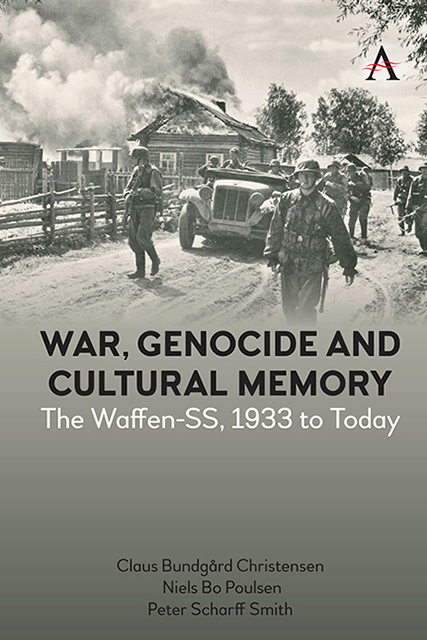Book contents
- Frontmatter
- Contents
- About the Authors
- Foreword
- Chapter One Introduction
- Part I The Organisational and Military History of the Waffen-SS
- Part II Ideology, Discipline and Punishment in the Waffen-SS
- Part III A European Nazi Army: Foreigners in the Waffen-SS
- Part IV Soldiers and War Criminals
- Part V Waffen-SS After 1945
- Epilogue The Nazi’s European Soldiers
- Appendix
- List of Abbreviations
- Bibliography
- Index
Chapter Eight - Germanic and Western European Volunteers in the Waffen-SS
Published online by Cambridge University Press: 08 June 2023
- Frontmatter
- Contents
- About the Authors
- Foreword
- Chapter One Introduction
- Part I The Organisational and Military History of the Waffen-SS
- Part II Ideology, Discipline and Punishment in the Waffen-SS
- Part III A European Nazi Army: Foreigners in the Waffen-SS
- Part IV Soldiers and War Criminals
- Part V Waffen-SS After 1945
- Epilogue The Nazi’s European Soldiers
- Appendix
- List of Abbreviations
- Bibliography
- Index
Summary
From the late 1930s to 1945, between 45,000 and 50,000 Germanic volunteers entered the Waffen-SS. The largest group was 23–25,000 Dutch followed by about 10,000 Flemings. Ca. 6,000 Danes and as many Norwegians also served with the Waffen-SS. In addition to these there were a limited number of British, Swiss and Swedes who volunteered.
According to Nazi racial belief, the Germans were merely one of more Germanic peoples related by blood which included Danes, Dutch, Flemings, Norwegians, Swedes and Germans as well as a number of smaller groups all originating from the Germanic tribes. These had allegedly populated Europe since, in a distant past, they immigrated, along with other Aryan peoples, from the Himalayas. The Germans were believed to be the most important of those making up the Nordic, or Nordic-Germanic, race. This, again, was but one – though supposedly the most important one – of the Aryan races.
Far from all Nazi leaders attached particular importance to this, allegedly, common Germanic inheritance. However, the notion of bringing all Germanic polities together under German leadership was popular with the SS. Along with more traditional cynical ponderings on empire and realpolitik this engendered the ambition of making the SS a ‘Pan-Germanic’ organisation. This goal was to be achieved partly through the recruitment of Germanic volunteers for the Waffen-SS.
European Nazism and the Germanic Volunteers
The Germanic volunteers were kindred spirits of the German Nazis like no one else among the non-German groups in the Waffen-SS in that they were almost entirely voluntarily recruited, and generally speaking wanted to fight for a National Socialist Europe modelled on the Germany of the 1930s.
Recruitment of Waffen-SS soldiers from neighbouring Germanic states was part of a deliberate strategy towards establishing and securing the SS power beyond Germany's borders. The idea was to expand the organisation through a combination of providing foreign Germanic personnel for service at the front and setting up SS branches in all the countries in question. The local SS organisations were to be the footholds for integration of new land into a Greater Germany. Not military requirements, but this long-term aim was the ulterior agenda, which was clearly stated by the HSSPF in the occupied Netherlands, Hanns Albin Rauter. In September 1941, he wrote to Himmler about recruiting Dutch citizens; ‘If we have these 5,000 SS men on our side I should not worry about the future of Holland’.
- Type
- Chapter
- Information
- War, Genocide and Cultural MemoryThe Waffen-SS, 1933 to Today, pp. 159 - 186Publisher: Anthem PressPrint publication year: 2022

